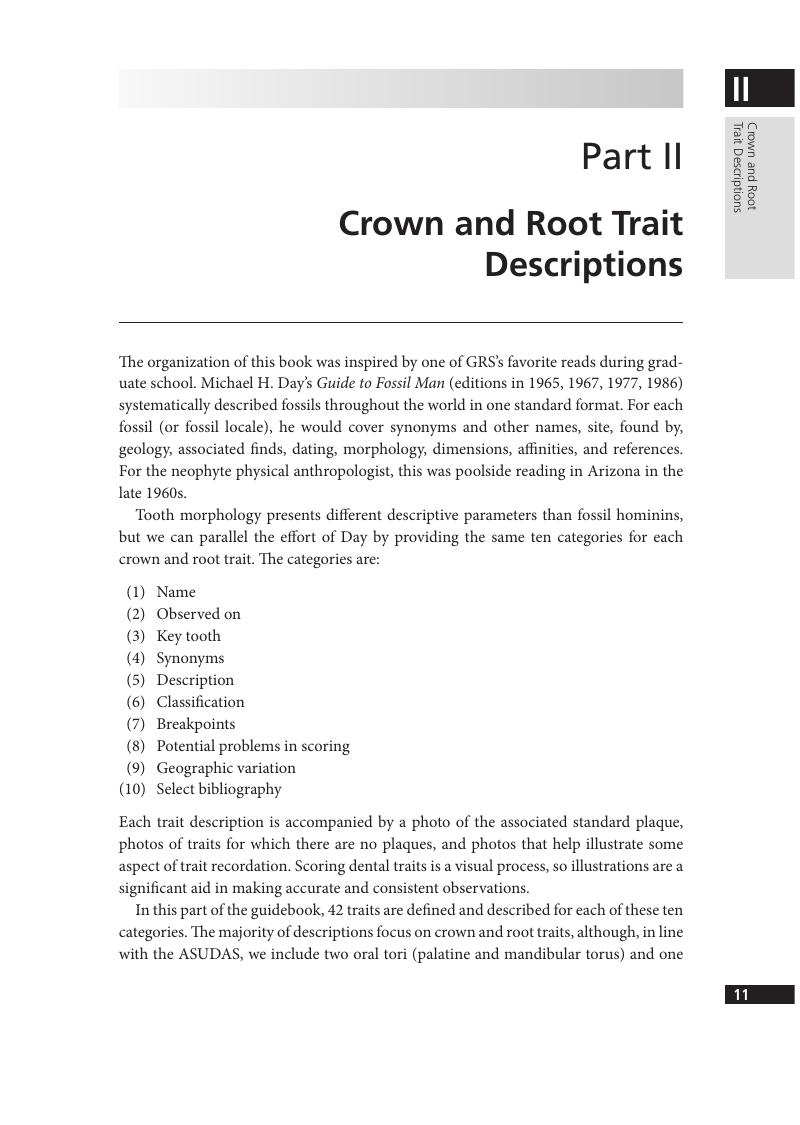Book contents
- Human Tooth Crown and Root MorphologyThe Arizona State University Dental Anthropology System
- Human Tooth Crown and Root Morphology
- Copyright page
- Dedication
- Contents
- Acknowledgments
- Part I Introduction
- Part II Crown and Root Trait Descriptions
- Part III Conclusions
- Appendix: Comparative Data
- Miscellaneous endmatter
- References
Part II - Crown and Root Trait Descriptions
Published online by Cambridge University Press: 21 April 2017
- Human Tooth Crown and Root MorphologyThe Arizona State University Dental Anthropology System
- Human Tooth Crown and Root Morphology
- Copyright page
- Dedication
- Contents
- Acknowledgments
- Part I Introduction
- Part II Crown and Root Trait Descriptions
- Part III Conclusions
- Appendix: Comparative Data
- Miscellaneous endmatter
- References
Summary

- Type
- Chapter
- Information
- Human Tooth Crown and Root MorphologyThe Arizona State University Dental Anthropology System, pp. 11 - 248Publisher: Cambridge University PressPrint publication year: 2017
References
Reference
Select Bibliography
Select Bibliography
Select Bibliography
Select Bibliography
Select Bibliography
Select Bibliography
Select Bibliography
Select Bibliography
Select Bibliography
Select Bibliography
Select Bibliography
Select Bibliography
Select Bibliography
Select Bibliography
Select Bibliography
Select Bibliography
Select Bibliography
Select Bibliography
Select Bibliography
Select Bibliography
Select Bibliography
Select Bibliography
Select Bibliography
Select Bibliography
Select Bibliography
Select Bibliography
Select Bibliography
Select Bibliography
Select Bibliography
Select Bibliography
Select Bibliography
Select Bibliography
Select Bibliography
Select Bibliography
Select Bibliography
Select Bibliography
Select Bibliography
Select Bibliography
Select Bibliography
Select Bibliography
Select Bibliography
- 1
- Cited by



